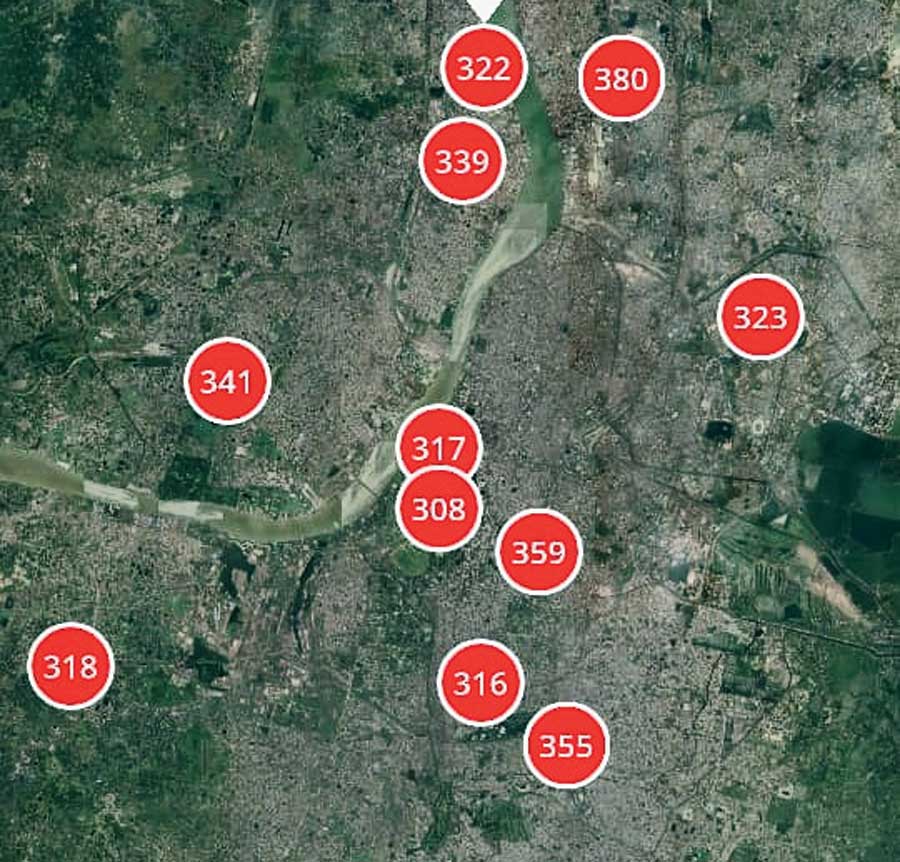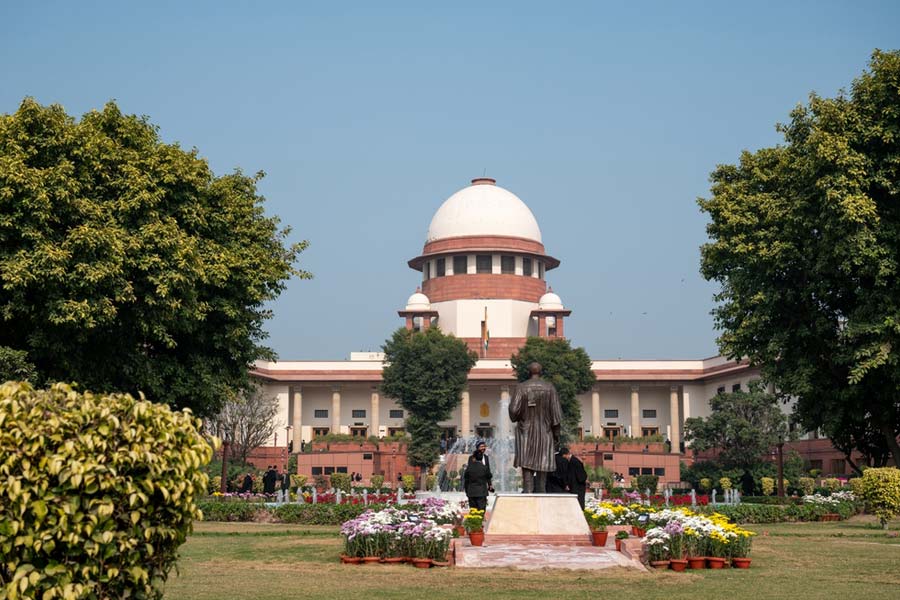Calcutta is literally in the “red” when it comes to air pollution, according to the state pollution control board data on Monday.
Around 7.30pm on Monday, the entire stretch of Calcutta along with Howrah and the fringes of the two 24-Parganas was found to have “very poor” air quality with all 11 automatic air pollution measuring stations in the region recording air quality index (AQI) values in excess of 300; according to the app maintained by the West Bengal Pollution Control Board.
A rough calculation shows that the stations cover nearly 375sqkm and a population of about 8.5 million.
The air pollution station within Rabindra Bharati University recorded the highest AQI value of 380; the station at BITM in Ballygunge area showed 359 followed by 355 at the Jadavpur station. While Padmapukur in Howrah was found to have an AQI of 341; Ghusuri and Belur in the same district recorded 339 and 322 respectively.

AQI levels around 7.30pm: 322 (Belur), 380 (RBU), 339 (Ghusuri), 323 (Salt Lake), 341 (Padmapukur), 317 (Fort William), 308 (Victoria Memorial), 359 (Ballygunge), 316 (Rabindra Sarobar), 355 (Jadavpur), 318 (Budge Budge). Source: WBPCB
Victoria Memorial, Fort William and Rabindra Sarobar - where the measuring stations are located within green verge and hence expect to show less pollution — showed AQI values of 308, 317 and 316 respectively.
Budge Budge on the city's southern fringe recorded AQI value of 318 and Salt Lake on the northern fringe recorded 323, showing the pollution spread is all over the wider city. In all the stations, PM2.5, the most toxic ultrafine particulate, was the dominant pollutant.
According to the Central Pollution Control Board, prolonged exposure to AQI value in excess of 300, considered “very poor” air pollution, may trigger respiratory illness within common people.
“Both known sources of air pollution as well as meteorological factors combine to create poor quality of air. However, without a detailed study, it is difficult to conclude which one contributes how much in the city's air pollution mix,” said Professor Sagnik Dey, an air pollution expert with IIT Delhi and presently working on the city's air pollution.
Dey opined that post-unlocking, the city has gone back to the path of usual pollution peril.
Earlier, a study by environment think tank Centre for Science and Environment (CSE) showed that Calcutta had experienced an extremely polluted December, even worse than last year, as the level of ultrafine PM2.5 in the city had jumped 13 times compared to August which was found to be the cleanest on the aftermath of the Covid-triggered lock down.
“Poor commercial vehicles are mainly responsible for the city's heightened pollution level. The PCB, the state environment department and the government need to act on that front,” said environmentalist Subhas Datta, who has moved the court demanding introduction of environment friendly CNG in the city replacing highly toxic diesel.
According to a recent study carried out by the National Environmental Engineering Research Institute (NEERI), about 28 per cent of toxic PM2.5 pollution in the city is caused by households, closely followed by road dust and vehicular pollution (both around 25 per cent).











